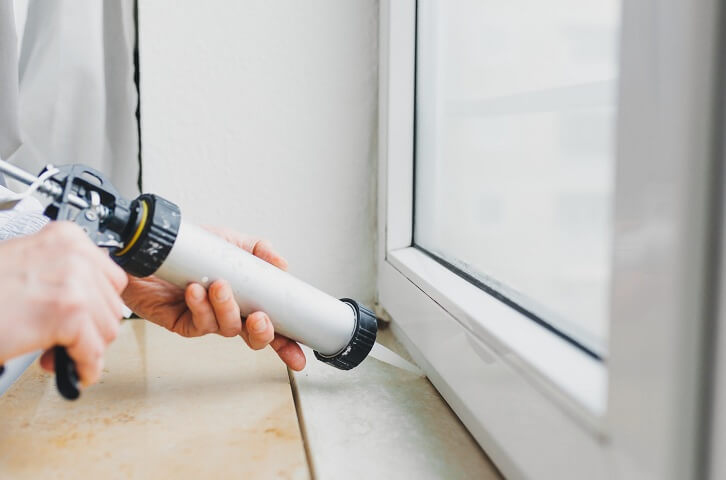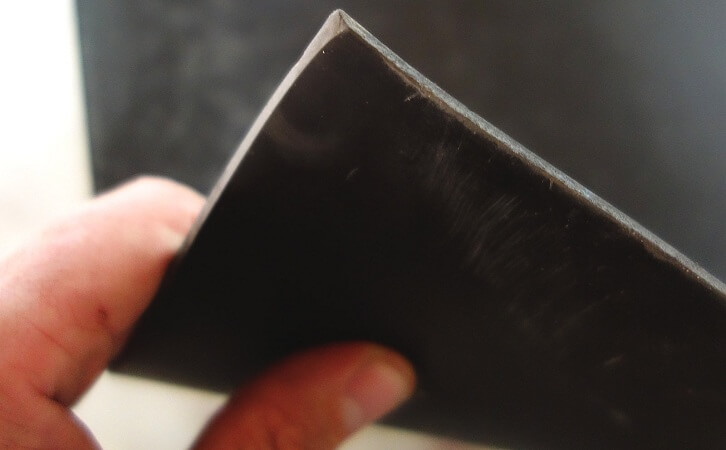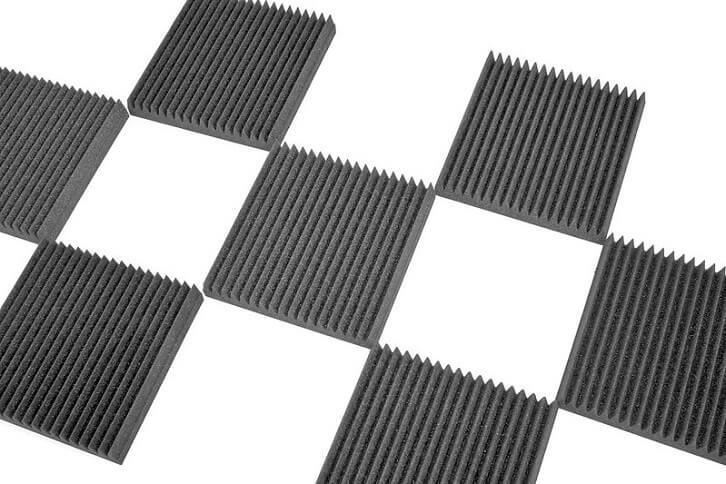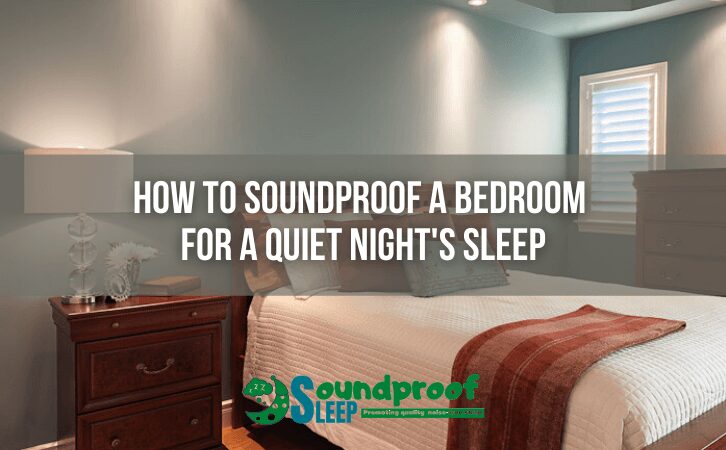Noisy neighbors, traffic, living in a developing city, all these sounds and noise can affect the quality and quantity of sleep you get every night. While you cannot control noise, you can try and minimize how it enters your home. Soundproofing your whole home can be crazy expensive. However, identifying rooms you spend most of your time in and rooms that are more susceptible to allow sound in can be a start of blocking sound out.
The bedroom is where most people spend their time in. Whether you are relaxing or sleeping, noise can make it practically impossible to get a good night’s sleep or relax after a long busy day at work. Soundproofing your bedroom is one of the solutions to reclaim peace in your home.
It is practically impossible to soundproof a room 100%, but you can make it quieter. Identifying areas in your bedroom that need soundproofing is the start of making a fortress of solitude.
Here are some of the steps you can follow to soundproof a bedroom.
- Soundproof the Bedroom Door
- Work on the Windows
- Add some Mass to Walls
- Soundproof Floors and Ceiling
- Use Sound Absorbing Acoustic Panels
- Rearrange the Room
How to Soundproof a Bedroom
[sta_anchor id=”soundproof-bedroom-door”]1. Soundproof the Bedroom Door[/sta_anchor]
The door is one of the important elements to consider when you are soundproofing a bedroom. Depending on where the door is facing, the door can let in noise from above, below, and the sides.
The first step of soundproofing a door is adding a door sweep below the door. A door sweep blocks the gap beneath the door and keeps sound from entering the bedroom. Most door sweeps are easy to install and very cheap to buy. For a good door sweep that is cheap and easy to install we recommend you try the Suptikes Door Draft Stopper.
The next step of soundproofing a door is using weather stripping tape on the sides. The gaps between the door and the frame can also allow noise into the room. Using weather stripping tape around the perimeter of the door should be sufficient to block noise.
These two basic steps are the start of soundproofing. If the door is one of the major entry points for noise and sound into your bedroom, check out our comprehensive guide on how to soundproof a bedroom door.
[sta_anchor id=”work-on-windows”]2. Work on the Windows[/sta_anchor]
Windows do a very bad job of blocking out noise. If your windows are facing a busy street, then they are the biggest source of noise in the bedroom. Window soundproofing methods range from DIY methods that are quick and cheap to complex methods that require professional help. We have an in-depth article on soundproofing bedroom windows. However, let’s go through some quick and easy fixes you can start with.
First, start with the tiny details around your window, these are small holes and cracks. Acoustic caulk comes in very handy, and it is a very quick fix. Choose an acoustic caulk like Green Glue Noiseproofing Sealant that is flexible and will not crack or shrink with time.

If the cracks or gaps around your windows are bigger, weather stripping tape is a good and effective alternative.
While sealing the gaps and cracks help, covering the windows takes you a step closer to your goal. To cover your windows, you can use sound deadening or soundproof curtains. Soundproof curtains do not block much noise, but they do quite a good job of drowning and reflecting noise outside. Aside from helping block some noise, soundproof curtains also double as blackout curtains to block light into the bedroom.
NiceTown has a wide range of good curtains you can use on your bedroom windows. The NICETOWN Blackout Curtains Panels for Bedroom are a good choice you can check out.
At night, completely blocking the windows can be the best way of blocking noise. A window plug is the best answer for blocking out noise through the window. You can make a window plug or have one custom made to fit into the windows in your home. At night or when you are relaxing, plug them into the window opening and enjoy peace.
Window plugs are very effective and do not require messing up your windows. They are also cheap and easy to build if you enjoy DIY projects.
[sta_anchor id=”add-mass-to-walls”]3. Add Some Mass to Walls[/sta_anchor]
Adding thick blankets to a wall or egg trays are some of the cheapest and recommended ways of soundproofing a wall. These two methods work by absorbing sound and prevent it from reflecting around the room.
However, for best results consider adding Mass loaded vinyl to the wall. Mass loaded vinyl is a flexible material specifically made for noise control. Mass loaded vinyl comes in rolls of 4-foot wide, for home application. The applications of mass loaded vinyl range also to dampen sounds from engines and other objects that cause vibration impact.

Although it is not the prettiest soundproofing material, mass loaded vinyl can be painted to improve its aesthetic properties.
Other than adding mass loaded vinyl, there are other ways you can soundproof a wall. Extra drywall, using sound clips and resilient channels, or filling walls with sound dampening materials can still work. Check out our guide to better soundproof a wall in your bedroom.
[sta_anchor id=”soundproof-floors-and-ceiling”]4. Soundproof Floors and Ceiling[/sta_anchor]
When soundproofing a floor or ceiling, you are dealing with two types of noise. The first noise is impact noise, and it is what you hear when the subwoofer vibrates or a person walking around. The second is airborne noise, and it travels through the air.
Impact type of noise is the most common to floors or ceiling and can travel even though the floor to the ceiling down to other rooms.
The simplest way to soundproof a floor is to add a thick carpet. Carpets do a very good job of muffling and drowning the sound of people walking around, or other impact noises. For better results adding mass loaded vinyl between the carpet and the floor will improve the results.
Placing your speakers, subwoofers, or exercise equipment on the dense sound-absorbing foam can also help dampen vibrations and reduce the transfer of sound between the surfaces. This is known as decoupling and prevents sound vibrations by dampening or absorbing them.
Adding extra drywall to the ceiling can also help sound from traveling down the floor. For better results, add sound insulation foam, fiberglass, resilient channels to absorb sound and prevent it from traveling down. If there is no room below your floor you do not need to soundproof the floor. A simple solution like adding a carpet or decoupling electronics will work.
[sta_anchor id=”use-sound-absorbing-acoustic-panels”]5. Use Sound Absorbing Acoustic Panels[/sta_anchor]
Acoustic panels are usually made of foam and work by absorbing sound. Most types of acoustic panels are not going to soundproof a room, but they do a great job of absorbing sound and preventing reflection around a room. The application of acoustic foam is normally seen in a recording studio where noise can mess up a record.

Apart from the usual acoustic panels, there are also acoustic retractable panels that work by reducing noise through an entrance. Acoustic retractable panels work by covering the door, windows, or any other entrance. Retractable acoustic panels are dense and can block noise by up to 30 decibels.
For windows, you can get custom made panels, or buy bigger sized panels and cut them to fit. These can be an alternative solution to soundproof window plugs.
[sta_anchor id=”rearange-room”]6. Rearrange the Room[/sta_anchor]
Sometimes, a simple thing such as rearranging furniture in a bedroom can be very effective. It is easy, and best of all, it does not cost a dime. One effective way of doing this is moving the dresser or a bookcase to the outside wall facing a busy street or hallway. Adding upholstered furniture near a window can also help by absorbing noise or other sounds.
Tips for Better Soundproofing Results
Before starting a soundproofing project or buying DIY soundproofing materials, there are several things you can consider to get better results.
First, consider the type of sound you are soundproofing against, how loud is the sound? Is it constant? Is the pitch low or high? The last you would want to do is buy soundproofing curtains or using soundproofing foam, only to find out it does not make much of a difference. So carefully consider the intensity or quantity of noise you are working against to get the best results.
Second, the pros and cons of any method you are going to try. You do not want to spend money only to get a small reduction. Also, most DIY methods are cheaper, but they will not be as effective as double glazing or other professional soundproofing methods. If you choose to go with cheaper DIY soundproofing methods, do not expect the best results.
The third is the aesthetic aspect of the method. Mass loaded vinyl on walls can be a little unattractive, are you ready to live with that? Acoustic panels, though effective might not appeal to your tastes. All in all, consider if it is worth it to deal with some of the changes and also consider better alternatives you like.
Lastly, consider the STC Ratings of products you use for soundproofing. STC stands for Sound Transmission Class, and it is the measure of how well a product can reduce or block sound. The higher the STC rating, the better a material will block out noise. Compare different products to know which is better. A small difference in STC ratings (say 3 STC or lower) is nearly imperceptible and not worth a higher price.
Wrapping Up
To get better sleep at night, soundproofing your bedroom is one of the best choices you can pick. While it can seem like a hassle and hard project to undertake, the results are worth it.
Do you have any experience on soundproofing a bedroom or any other rooms for that matter?
Comment below with your suggestions, tips, and tricks and help other homeowners block out noise.

